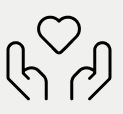Carrera |
Other |
Scalextric |
HotWheels / Slot cars |
On-Road / Drift |
Chassis & drivetrain |
Full bodies |
Wheels |
1:32 |
Find same →

90% goes to the Creator
(excluding payment processing fees)
$12.50
Technical
PRINTING TIPS:
The Chassis:
- It has been designed to be printed using 0.4mm perimeter thickness and 0.2mm layer height. It should take around 1h to print the main part
- You will need to add some supports for the guide zone and in the back in some cases
- Be sure you have a good inter-layer adhesion to avoid breaking it while introducing bushings, the motor or the guide
- I print them in PLA or PETg, but probably you can try other rigid materials
- Remove supports with care and clean up any screw holes after printing with 3mm tool. Do the same for the guide hole with 4mm tool
- To insert / remove bushings or motor, you can bend up a little the chassis to favour the in/out movement
The Guide:
- You will need to add supports until the "plate" height, use slow printing speeds, small layer heights and print it 100% filled.
The Bushings:
- I print them in 0.4mm perimeter thickness and 0.1mm layer height. Try to keep starts near the round sides instead of the long side walls. The holes are 3.2mm and 2.55mm diameter, so your 3mm or 2.3mm axles should pass and spin inside without problems. Use a proper tool to increase the hole size if you need it.
The Main Body:
- This is the most relevant and difficult part. The position I suggest to print the body is very important, it has been designed and modified to help printability in this position. This way, you will need supports only for a few initial mm, while the most of the body will print over itself.
- In this case, for a 4h print, I use 0.16mm layer height, but I can half it to 0.08mm if I want more resolution but not always better result.
- As it is mostly a 0.8mm shell, you will need 0.4mm perimeter thickness to print it the most effective way, minimising the retractions to 0 per layer in many cases. This is the main idea, the one which should lead into more clean and accurate result, the less retractions and travels, the better finish.
- Try to minimise your stringing, blobbing, oozing etc to 0 if you want to remove your supports easily with low temps, but not too much to avoid loosing the strong bond between layers
- In Cura, you can reduce speed for overhangs... I did this in my last prints with good results.
- If you have transparent material, PLA or PETg, don't mess around with fan speed or printing speed during the print, I mean automatically, to have the most homogeneous finish.
- Use low speeds, specially for outer walls, (I used something like 20mm/s) and do the same with acceleration to avoid ringing... If you can, like in Cura, use lower accel value for outer wall, like 200mm/s2 in my case, while I print other elements like tops/bottoms at 400mm/s2 or supports at 600mm/s2
The Body Accessories:
- These parts are specially small sized. In most cases, you will have to use a smaller nozzle or just "trick" your printer making it print thinner perimeters, like 0.35, 0.32 or 0.25mm instead of 0.4mm
- They are so small that even with very high resolution they won't take too much time, so try your best slicing params for these ones.
- Add supports if you can't find a way to print without them.
The Rims:
- The basic rims should be printed over the external face without supports using 0.4mm perimeter thickness and your desired layer height. Print them solid if you want to add very little weight or with 2 perimeters and 15% infill if you want to get lighter.
Crown and Pinion:
- Use very thin perimeter thickness to ensure you really fill the teeth of the gears. Use small layer height to improve finish and slow speeds to have accurate teeth and shapes.
- If you need it, use very little negative horizontal expansion, like -0.02mm, to be able to fit the crown into the rim. The holes in this case are 2mm for the pinions and 2.5 or 3.1mm for the crown. Use a proper tool to increase the hole size if needed
26 objects
5 Followers
Joined 7 months ago
Hi there! I'm an individual who has been designing and playing with RC cars and Slot cars for some years. Take advantage downloading and playing with my designs :) Let your screen rest for a while building and playing physically!

 Free
Free